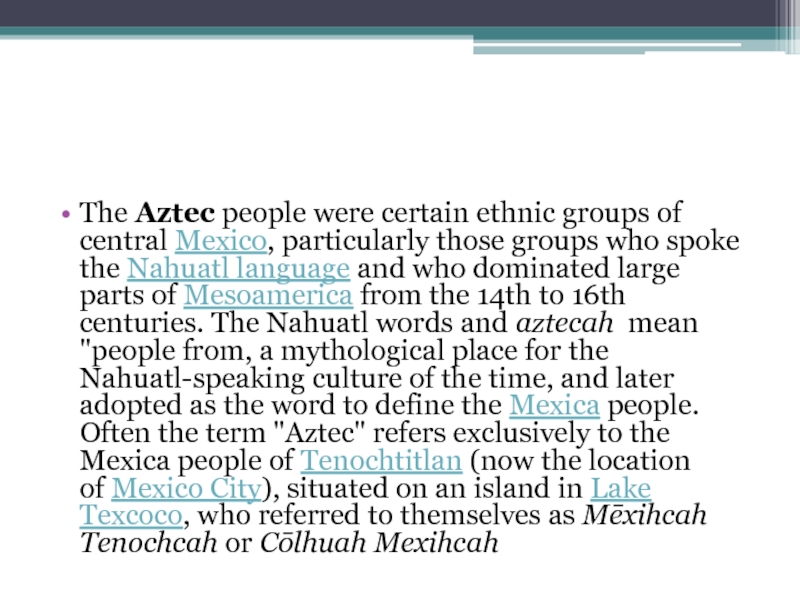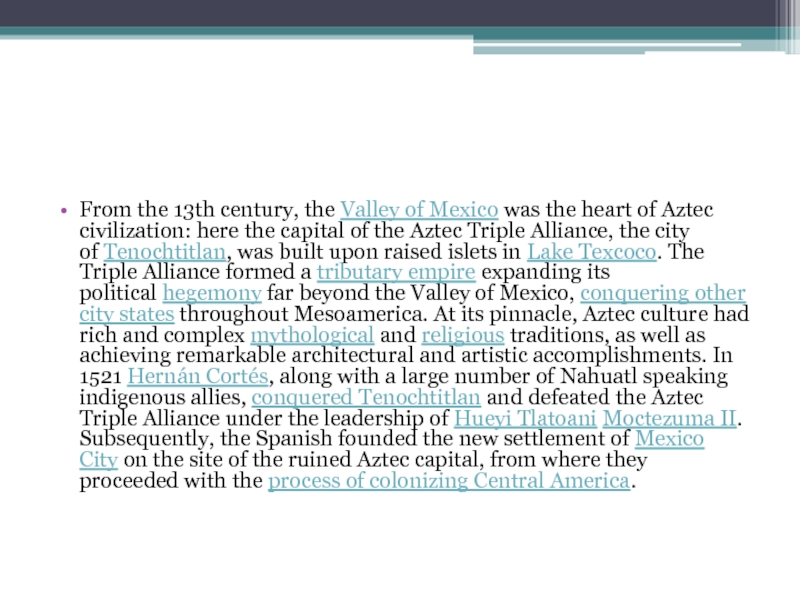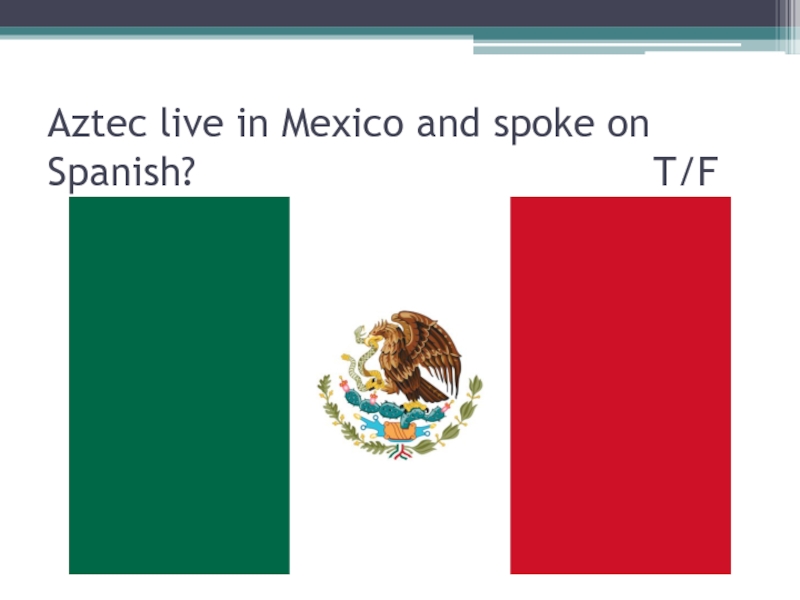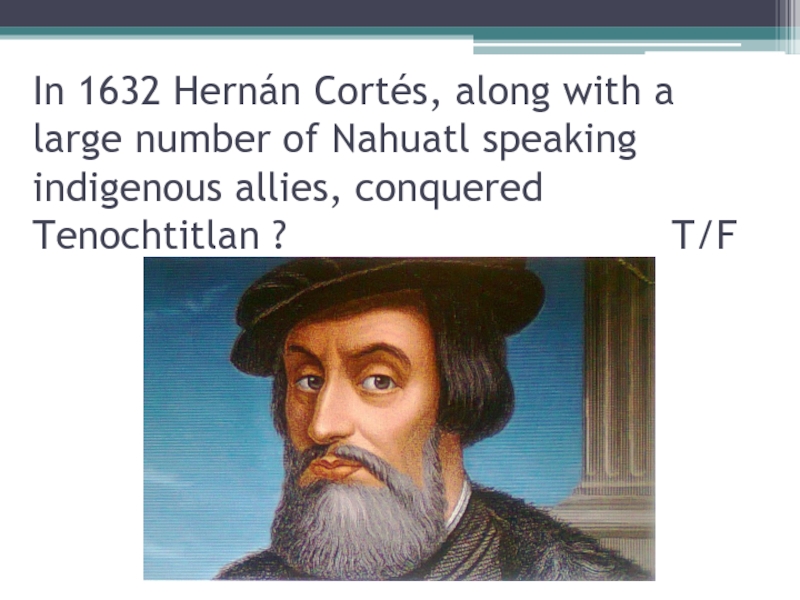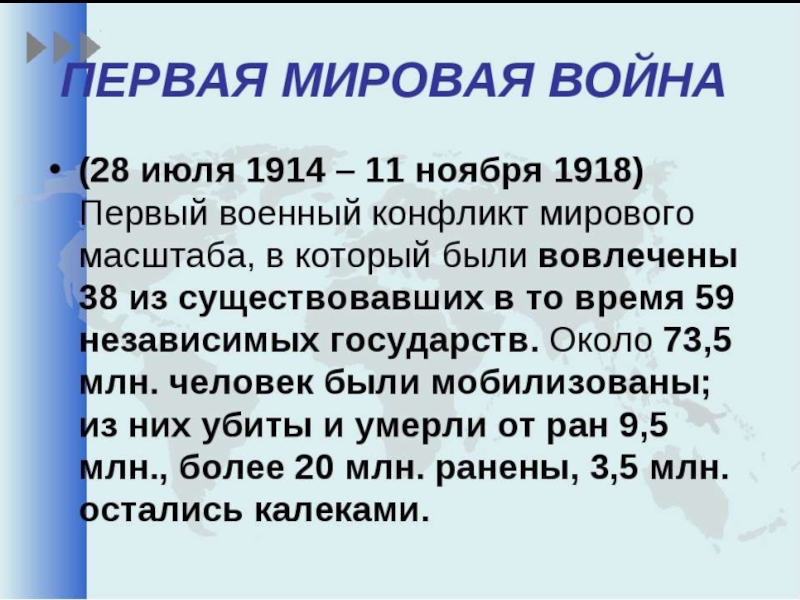- Главная
- Разное
- Дизайн
- Бизнес и предпринимательство
- Аналитика
- Образование
- Развлечения
- Красота и здоровье
- Финансы
- Государство
- Путешествия
- Спорт
- Недвижимость
- Армия
- Графика
- Культурология
- Еда и кулинария
- Лингвистика
- Английский язык
- Астрономия
- Алгебра
- Биология
- География
- Детские презентации
- Информатика
- История
- Литература
- Маркетинг
- Математика
- Медицина
- Менеджмент
- Музыка
- МХК
- Немецкий язык
- ОБЖ
- Обществознание
- Окружающий мир
- Педагогика
- Русский язык
- Технология
- Физика
- Философия
- Химия
- Шаблоны, картинки для презентаций
- Экология
- Экономика
- Юриспруденция
The Aztec people презентация
Содержание
Слайд 2
The Aztec people were certain ethnic groups of central Mexico, particularly those groups
who spoke the Nahuatl language and who dominated large parts of Mesoamerica from the 14th to 16th centuries. The Nahuatl words and aztecah mean "people from, a mythological place for the Nahuatl-speaking culture of the time, and later adopted as the word to define the Mexica people. Often the term "Aztec" refers exclusively to the Mexica people of Tenochtitlan (now the location of Mexico City), situated on an island in Lake Texcoco, who referred to themselves as Mēxihcah Tenochcah or Cōlhuah Mexihcah
Слайд 3
From the 13th century, the Valley of Mexico was the heart of Aztec
civilization: here the capital of the Aztec Triple Alliance, the city of Tenochtitlan, was built upon raised islets in Lake Texcoco. The Triple Alliance formed a tributary empire expanding its political hegemony far beyond the Valley of Mexico, conquering other city states throughout Mesoamerica. At its pinnacle, Aztec culture had rich and complex mythological and religious traditions, as well as achieving remarkable architectural and artistic accomplishments. In 1521 Hernán Cortés, along with a large number of Nahuatl speaking indigenous allies, conquered Tenochtitlan and defeated the Aztec Triple Alliance under the leadership of Hueyi Tlatoani Moctezuma II. Subsequently, the Spanish founded the new settlement of Mexico City on the site of the ruined Aztec capital, from where they proceeded with the process of colonizing Central America.
Слайд 7In 1632 Hernán Cortés, along with a large number of Nahuatl speaking
indigenous allies, conquered Tenochtitlan ? T/F

